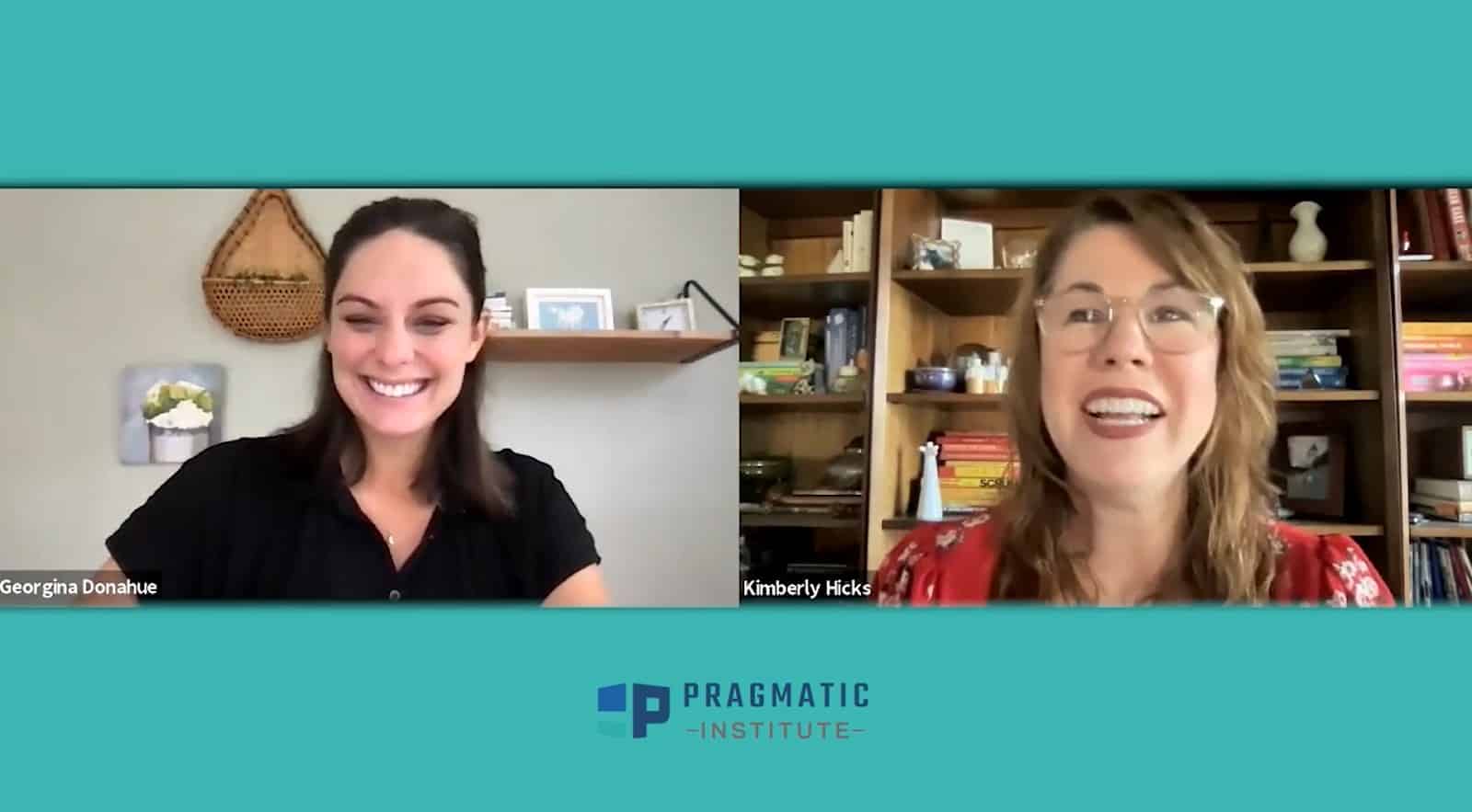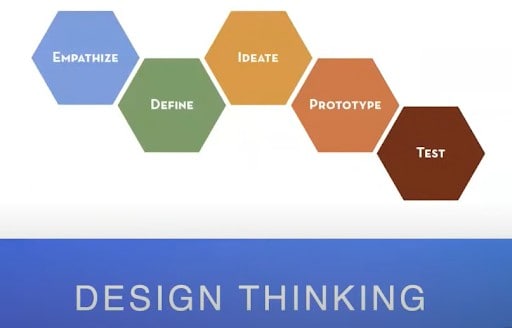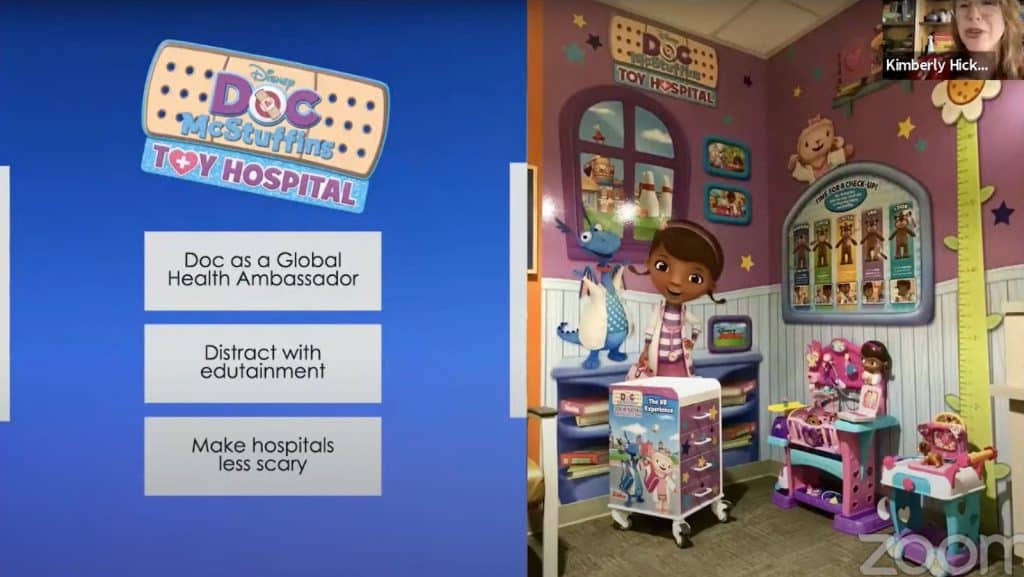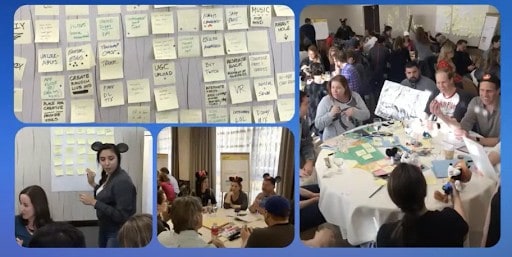15-minute read
Former Vice President of Products, Games and Interactive for the Walt Disney Company Kimberly Hicks joined Pragmatic Institute to share how Disney uses product design and design thinking best practices to create and innovate products that users love.
Hicks and her team launched Disney Channel’s app and website, DisneyNow, and helped Disney Channel worldwide rapidly expand their digital services. She shared how using design thinking made a difference in re-imagining the Disney Channel app experience to create deep product immersion, interaction and delight. Hicks shared how Disney uses design thinking to create product magic, and how product teams can leverage this creative problem-solving approach in their own work.
Watch the video or read the transcript from her June 22, 2022, webinar. You can use the links below to jump to the section that most interests you.
- Design Thinking at Disney
- Empathize with Users
- Define the Problem
- Design Ideation
- Hypothesis and Prototype Testing
- Q&A with Kimberly Hicks
Bringing Design Thinking to Disney Channels
I started working with the Disney Channel and then expanded my role to include all of the TV products. We had three apps in the marketplace: Disney XD, Disney Channel and Disney Junior. It didn’t make sense to have three different apps in the market; it just created more friction and impacted discoverability, so we made the decision to consolidate that.
I loved design thinking because it puts the user first and helps you identify new business opportunities you may not have thought of that make a better experience for the user. I thought it was a good fit for Disney.
Design thinking is an iterative process where you want to empathize with the users, so you understand where they’re coming from and what their needs and wants are. Then you define the problem. This is important because a lot of times the initial problem you see is not the core problem. It’s surface level. So, define what the problem is, ideate on solutions, prototype and then test.
Empathize with Users
We partnered with the Children’s Hospital of Los Angeles on how we can use VR to reduce anxiety in the hospital experience. We have Doc McStuffins, a six-year-old character. She has all these toys, and she’s the doctor. She does little procedures on her stuffed animals.
The first thing the team did with CSLA was a journey map. You have conversations with your users: where are the high points and the low points in their experience? If you can impact the lowest points, that’s going to give you the most lift, so we targeted the pre-op and post-op experience as opportunities. We chose Doc because when you get sick, you want that nurturing thing you remember from when you were little. Doc gave that to people, but it also helped them understand the hospital experience.
Being Disney, we didn’t just do a VR experience, we did a fully immersive experience. We converted a waiting room to something special and magical and a lot of fun. Imagine being a kid sitting in a waiting room. It’s scary and boring and there’s nothing to do. In this one there’s books, the VR experience, toys — it helps to engage them and makes that hospital experience less scary. In the VR experience, you’re in the hospital and you find different stuffed animals with problems, and you and your assistants help fix the animal.
When you go under anesthesia for a procedure, whatever emotion you feel at that time is the emotion you’ll have coming out. If you’re anxious, you will wake up anxious. That affects your recovery time as well, because you hold on to that anxiety. But it reduced a lot of that anxiety, increased their comfort and even reduced the time they were thinking about their surgery. Distracting them with edutainment, we were able to reduce that.
Hearing what the kids talk about was just impactful too. You know you hit the mark when kids are speaking highly of that experience. We were happy to do that research project.
Define the Problem
The next part of design thinking is to define the problem. I encourage you, when you’re looking at problems or opportunities, to dig deep to see the root cause or effect of the problem and try to delve into that. When I started at Disney, we were talking about merging the apps, but I felt the products that were in the market were utilitarian, and I wanted to bring that magic.
I started thinking about design thinking. How can I leverage that to create a new vision for this product and also bring a bunch of different parties together that had not talked before about how to make a product? The feeling I wanted with our app is that you are transported when you’re using it; you’re part of the world of our shows and characters.
For a long time, television apps and websites were seen as marketing tools, not as a primary source for video content. I wanted to bring that together from our user’s perspective, to change that philosophy and approach of how these products work with our content. So to do this, I decided to pull together 60 people from Disney Channels. I wanted to leverage their knowledge and expertise and also have them incorporate it into the vision. By myself, I could have executed a vision, but what we came out with was even better.
I got people from every area of Disney Channels: engineering, design, product, marketing, content development, legal, HR and research — anyone I felt would touch the app experience I included. I broke them up in teams of 10, got VIP guides, and assigned them to a land in Disneyland. Their job was one have fun but also look at what immerses you in that land, what transports you, the attention to detail, the music …
That’s where the guides came in handy. They had that history, and they knew Walt’s vision. They can point out those things you don’t notice when you’re walking around but that make you have that feeling. Even the smells in certain areas of the parks will give you a sense of where you are and what’s going on.
Ideate the Design
We did the ideation in the morning to come up with some ideas on how to make that feeling in an app. Fortunately, people were interested in and passionate about Disney and making this an experience. We did a skit where you act out the experience as the user’s experiencing it. I didn’t know how people would embrace this, but the feedback I got was that it was one of the best off-sites they did.
From that day we defined our product pillars of heritage, reward, detail, content, personalization and guests. And this came from how we categorize all the ideas that came out of that session. The best success factor was that we collectively came up with a product vision.
I had ad sales there, marketing, our content teams — everyone saw how they can support the app experience, believed in that product vision and felt it was something we can execute on. That’s important when you’re collaborating on a product and including people in that conversation.
This also set the tone for how we were going to work together in the future, because we had over 600 ideas that came from this day. Not all of them were technically possible. With smell-o-vision, we just don’t have that technology yet. But it helped us to define a business value for each item: what we felt the user value is for those items and scope out the effort and cost of doing that. And that helped us weigh what we put on our roadmap.
We then took ideas through iterations, testing with users and getting feedback before we launched. That was a key point of having this collaboration: how we feel about our roadmap, what was part of our MVP and what goes on our roadmap for the next two years.
That was critical to build that collaboration. So we had our product vision, which I felt was our commitment to each other as an organization of the product we were going to make.
One of the things that I love from that day is that they all wanted to figure out how they could bring their own Disney magic. So our design team dug into how we can do something special and how we can create maybe some surprise moments. If you tap the navigation buttons three times, you unlock these little Easter eggs that pop-up with fun sound and animation, a nice surprise and delight moment. They kept making these animations better and better. Now the animations are full color and as you tap on each icon, a symbol for that character showed up, so it just made it a lot more fun and engaging.
Test the Hypothesis and Prototype
The next phase is to test your hypothesis and the prototype. This is critical because we all think we have great ideas, but then when you get it into the market, it’s like wow, that did not hit as we thought it would. A lot of it is going back to the users and finding out what’s resonating with them.
One of the ways we do this with Disney channels is to work with kids. It’s important that we hear their voices, because by the time I know something’s cool, it’s not cool anymore with kids. Our kids board of advisors is a group of 24 co-product developers and co-designers. They’re ages six to 12.
This is not a focus group. This isn’t user testing. We put a new idea in front of these kids and we would look for what’s working with them or if it’s not working. We had that happen many times. It just didn’t resonate with them. We also had them do a pitch fest for us where they will pitch a game, activity or a new feature. And then the kids vote on the top four items and my team would then go back and prototype them. We usually have the pitch fest in October and then we show them prototypes in December, and the team’s amazing. They get functional prototypes, so the kids are just blown away with the quality of it.
We do brainstorming. We do card-sorting word associations. Sometimes we would just talk to him about what’s cool right now. Anything that’s on our roadmap or a new idea, we’ll put in front of them and get their ideas. It’s also a STEM initiative: we teach them how to do mock-ups, prototyping, brainstorming, and think of technical concepts.
The best part of the job is just making kids happy. When they see their ideas come to life, it’s just so impactful, but it also helps us make better products too. To reiterate, as we do design thinking, this is not a linear process, it’s iterative, and you can go forward or backward at any time.
So let’s say you get all the way to the prototype or the test phase, and you realize you’re not hitting the mark for whatever reason, or things have changed in the world. With the pandemic, maybe what you were working on in January of last year just didn’t work in February or April because the world changed.
You can go back then to the empathize phase, the define phase, and reevaluate where you were, look for the threads that are working and then build on those. Don’t ever feel once you get to prototyping or testing that you just have to keep moving forward. I think you also have to be brave enough to cancel something.
If it’s just not working, if you’re not getting the feedback that you expected, or the metrics that you expect, it’s okay. I worked at an R&D group at Turner, and one of the hardest things for us to explain is the ROI because disproving something is hard to put a value on, but by disproving it early, you’ve saved yourself a lot of money or potentially developing something all the way to a go to market product just to realize it didn’t work.
So there is a cost savings by disproving something as well. When failures happen in that safer environment — before you’ve spent a lot of time and money — it’s a big feat and that should be celebrated with your team.
At the test phase, that’s a partnership with design, engineering and product. I think of them as a three-legged stool; without one you’re going to be off. So you need to include design early on and include your engineering team early on, and especially think about your data early on because you need to set KPIs to know how you’re doing.
And if you can’t measure those KPIs, then you’ll never know. Use that team as a whole, from the beginning and include everyone in those conversations. When you’re empathizing, the engineers need to hear that too; sometimes they get cut out. Or when you’re prototyping, sometimes product gets cut out, and it’s just design doing it.
I think the three should work together through it. Now, who’s stronger could change as the phases go, but having all three of those teams together as one cohesive team makes a big difference.
When you’re looking for innovation, getting that buy-in and that support to be able to try different things and see what’s working and see what’s not and be open to well, that didn’t work today. That’s okay. Let’s try it.
Q&A with Kimberly Hicks
Question: What kinds of methods worked the best for you in getting your leadership’s buy-in on trying new things? There’s so much creativity here. There’s so much blue sky work. How did you get the buy-in to create space to do that?
Answer: I was fortunate when I came in that the leadership was embracing digital and saw the value in it. I also just approached it as a big collaboration. It wasn’t me pushing an agenda, it’s what’s best for the content, for the shows, for our audience. And I have been open to showing what’s working and what’s not. I think sometimes people hide the bad news, but I was always willing to share that as well and say I don’t think this is the right path to go on and explain why.
It’s important to have data, but you also have to trust your instinct and measure those together. A lot of that comes with experience, just to be able to say why you think something’s valuable or why it’s not. Believe me, there were many ideas I pitched that didn’t go well. My process was to pitch early and ask what others think about this and keep developing it. I tried not to present a giant thing we want to do, but rather ease into it. I think that was helpful.
Question: Does Disney use external UX resources as well, or is it all in-house?
Answer: Most of the designers are in-house. If they need supplemental resources, they’ll get somebody, but most of them are in-house and they’re amazing. We have motion designers, UX people … it’s a rich team. For research, we use internal and external teams, and that is such a primary partner to have.
Even when I would have that little early idea, as I’m pitching it to the leadership team, I’m also talking to them, “Hey, why don’t you guys think about this? Can we get some data around it? Can we see who else is doing it?” Plus, we would always do competitive analysis ourselves. Our research team would do it. Our UX team would do it. The product team would do it.
Question: How did you prime the participants on your team for that morning in the park? What did you tell them to look at?
Answer: I told them we were going to do a half day in the park and then a brainstorm.
I shared the vision: to figure out how we can bottle that magic you have in the park into an app experience. So they had the context, but I didn’t give them too much ahead of time, because I didn’t want people to overthink it and get nervous about it.
But I think because everyone worked with kids already they were in the space. And then after you’re in the park for a day or a half day, you’re in that mindset. So I think it worked well. I don’t know if I had caught them coming into work on a Monday morning everyone would have been so excited.
Question: Would you say that there are cultural aspects or indicators that are important for allowing design thinking to thrive?
Answer: Yeah. I don’t know that it would just automatically work in any organization. And I’ve taken bits of that since then, as we’re looking at a new concept or bringing those parties together just to brainstorm a concept — without the big Disneyland park day. I think having that day also set people up to be able to drop in for a brainstorm or planning session. It helped train everybody to take that same approach.
It is a top-down thing. If I showed up in Bob Iger’s office and we did this pitch — Bob’s a pretty innovative person, but I don’t know what his initial reaction would be — he might ask why we are acting out this pitch to him.
You have to make sure your leadership is prepped for the approach as well, so they can get it and follow along. You have to know your audience.
Question: Do you have other pieces of advice for leaders that are trying to create space for design thinking in their own work? What worked for you?
Answer: We had a tight timeline to get this product out, and it was developed in eight months for multiple platforms. So, it was a constant give and take on what is our MVP. And to me, I feel someone’s first experience with the product is the experience with the product, and you have one time to catch them.
So if we didn’t have some of that magic with kids, I felt it was a mess. You can add it later, but it just is not as good of an experience and they may not come back. So that was a constant conversation of what is truly MVP and what are these bells and whistles that some people saw as MVP.
It was about figuring out what’s the most impact to our user. What can we do and the timeline that we have, and then what do we feel on our roadmap going forward? There’s a balance there. You do have to look at the full experience when you’re looking at your MVP of what you’re going to launch with, and don’t just make it totally utilitarian and basic if that’s not the intent of your product.
A product has an emotion that goes with it, and I wanted that fun and that surprise and delight and that excitement around this product.
Question: How do you then take your ideas and determine which ones are going to be commercially viable? Who’s going to pay for it, right? Obviously smell-o-vision isn’t happening because it’s not possible, but what else gets left on the cutting room floor?
Answer: Well, that’s where we’d go through that iterative process, doing an early estimation of the business value and the user value. That’s so subjective though, because if it’s my big idea, I think it might have great business value and great user value when it doesn’t.
So, to look objectively at that and have multiple parties chime in on the business value and user value is important, then looking at that level effort and the cost and weighing those things. So if it’s super high user value, super high business value, then let’s do it. If it’s a big effort with little user value but big business value, maybe we need to rethink this to figure out what the user value is for it.
You have to weigh those options plus functionality. You have to have your basic functionality, but then going through that testing process, that’s where you get that feedback on if this is the business value and user value we thought it was.
There’s one thing that frustrates me. We can all make data show whatever we want, so you do need to look authentically at data and be willing to face that your great idea maybe wasn’t so great before you launch, rather than push through and keep pushing it, just to get it out in the market to see. Getting user feedback is important. I prefer one-on-one or small group user testing, or our kids board of advisors, over a focus group.
I think those focus groups are good early, to figure out a concept, but I think after that you get a lot of groupthink. And if you have a strong person that disses something, other people tend to follow. When you’re getting more tactical and getting an actual functional prototype together, do user testing and get that feedback.
Author
-

The Pragmatic Editorial Team comprises a diverse team of writers, researchers, and subject matter experts. We are trained to share Pragmatic Institute’s insights and useful information to guide product, data, and design professionals on their career development journeys. Pragmatic Institute is the global leader in Product, Data, and Design training and certification programs for working professionals. Since 1993, we’ve issued over 250,000 product management and product marketing certifications to professionals at companies around the globe. For questions or inquiries, please contact [email protected].
View all posts











